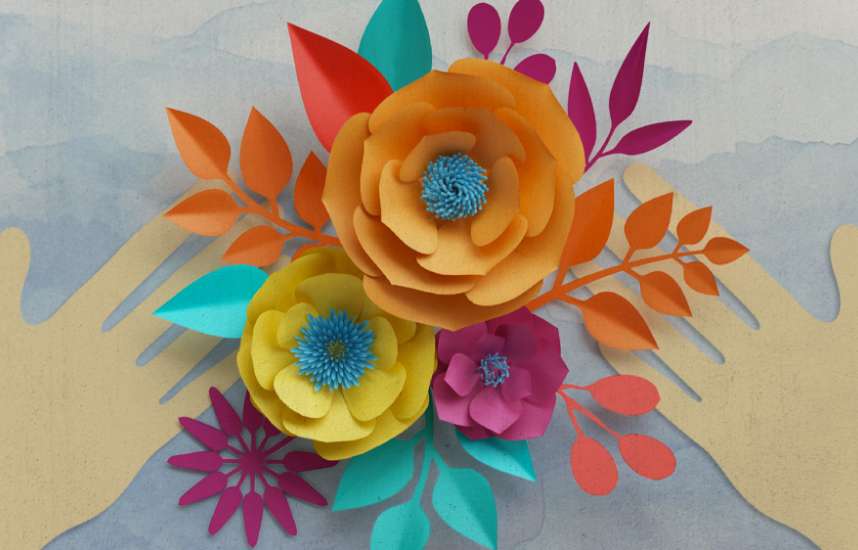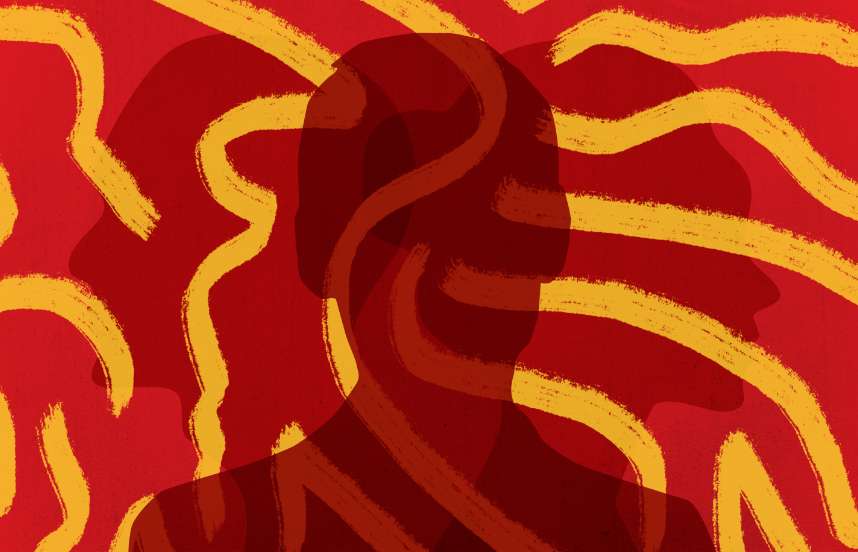Touching Our Buddha Nature
Mark S.
April 25, 2022

I’m from the United Kingdom, where I started practicing Shinnyo Buddhism in 1992. My wife introduced me to the teachings, and I started going to the temple with her. To be honest, I wasn’t that interested in visiting the temple at first, but my wife seemed to have become a better person through her practice of Shinnyo Buddhism, and that motivated me to go, too.
Master Tomoji, one of the founders of Shinnyo‑en, taught that gratitude is the first step towards enlightenment. For me, gratitude is the realization that other people are always supporting you. They can be your family, friends, colleagues, or even total strangers. I had such a realization in my workplace towards a colleague with whom I’d had a difficult relationship. At some point I understood that he was only trying to help, and the comments and suggestions he was making, which until that point had always led to friction between us, were his way of trying to make me do my job more effectively. I experienced a moment of insight and finally understood in my heart what this path was supposed to be about. My colleague was not the only person around me trying to be helpful. When you think about it, you’re getting this kind of support all the time, even if you haven’t noticed it.
Once I had this realization, I was able to respond to my colleague’s criticisms and comments much more constructively, and I felt gratitude. His attitude towards me also changed as he came to understand that I felt this way, and when I made comments about what he was doing, he was willing to accept them in turn. The friction in our relationship disappeared, and we developed a friendly, cooperative rapport. So I think good intentions can really bring people together and create harmony.
We all have a tendency to see the glass as half empty, but we can gradually adjust this, and I think it’s precisely when you are thinking positively that your own individuality can emerge and you can really be yourself.
These moments are when you get a little signpost saying, “The path is this way,” or “The path is that way.” That was when I thought, “Okay, if this is where the path leads, this is where I should start going.” Bringing out your buddha nature inspires you to practice more. What happens is that you overcome your anxieties about life and start thinking much more positively. We all have a tendency to see the glass as half empty, but we can gradually adjust this, and I think it’s precisely when you are thinking positively that your own individuality can emerge and you can really be yourself. It becomes much easier than when you are constantly falling prey to negativity.
During a recent ceremony at Shinnyo‑en, when I bowed towards Her Holiness, the officiant of the ceremony, I saw in her eyes great strength of purpose and determination, and sensed a profound prayer for everyone to overcome the obstacles they face to find enlightenment. I understood that this is somewhere we can all aim to get to in our lifetimes, because while Her Holiness is, of course, a Buddhist master, she’s also a human being like you and me. We must develop the determination to help other people find their buddha natures, and in so doing, discover our own buddha nature.
…because we’re more focused on other people than on ourselves, happiness becomes a little easier to come by, and life becomes a little bigger as well.
I’ve been asked how I’ve changed since I started practicing Shinnyo Buddhism, and I would say one of the main aspects is that I feel less stuck inside myself. Master Shinjo teaches that we’re trying to build a world of joy, and I think what a “world of joy” means is forming good relationships with other people, connecting with them, and helping them lead more fulfilling lives. Through doing that, we learn to lead more fulfilling lives ourselves. We come to realize that happiness is not just a question of satisfying our own desires or ambitions—though these are always going to remain, and are not always bad things—but because we’re more focused on other people than on ourselves, happiness becomes a little easier to come by, and life becomes a little bigger as well.
View more stories

Discovering Treasure in Painful Experience
By Jin Takamizu
Jin Takamizu, who practices in Tokyo, Japan, shares the story of a spiritual breakthrough he experienced while undergoing surgery to correct a cleft lip and palate he lived with for most of his life. He describes how undergoing that painful experience helped him discover a sense of purpose in life.
Gaining Peace and Self-Love
By Kevin Shi
Shinnyo‑en practitioner Kevin Shi, from Seattle, reflects on how the teachings offered him guidance and perspective when struggling with depression, helping him to rediscover a sense of inner harmony and self-worth.

Coming Home
By Amy Leval
Amy, an American living in Sweden, shares the story of how the simple practice of offering merit on behalf of family members that she had never met opened the way for healing and reunion within her extended family.

Sending Off the Spirits of the Dead
By Temple Staff Member
In this article from a 1954 Shinnyo‑en newsletter, a member of the temple staff describes an early lantern floating officiated by Shinjo and Tomoji Ito. Despite the many decades since it was written, the account will be remarkably familiar to participants of contemporary lantern floatings.

The Spirit of Gassho: Cultivating Gratitude as a Spiritual Practice
By Her Holiness Shinso Ito
Her Holiness likens living a true spiritual life to greeting others with a reverent expression of appreciation. A spirit of gratefulness for others and all that we have cultivates contentment and joy within us. It is a simple practice that we can only experience in the company of others.

Walking on My Own with Others
By Takako Masuda
Takako Masuda, whose disability once made her introverted and aloof, describes how a warm, encouraging gesture from Her Holiness helped her realize we never truly walk alone.

Healing Bitterness with Joy
By Tracy Yang
Tracy Yang, who lives in the United States, shares the story of her family breaking apart, the hardship of emigrating to New York with her mother, how sesshin helped her to uproot feelings of anger toward her and truly see her for who she is, and how with practice, her bitterness turned to joy.

Kindling the Warmth of Shinnyo in One’s Heart
By Nicolas Simonet
French practitioner Nicolas Simonet shares how, even after being a member of Shinnyo‑en for a long time and feeling he knew more than others, a crisis in his relationship provided him a mirror to see his own failings, and finally ground his practice in his heart.

Practicing from the Heart
By Lisa Bandiera
Lisa Bandiera, a member of the Shinnyo‑en temple in Sydney, Australia, describes how sesshin invigorated her spiritual practice within her family, and how studying at Shinnyo‑en has deepened and enriched her understanding of the faith tradition she was raised in.

Spiritual Training in a City Full of Potential Buddhas
By Ai Yamanaka
Shinnyo‑en practitioner Ai Yamanaka, from New York, finds spiritual inspiration, a happy life, and encouragement in the joyful open-heartedness hidden beneath the city’s superficial gruffness.

Steadfastly Walking the Path with Others
By Master Shinjo Ito
Master Shinjo Ito, the founder of Shinnyo‑en, shares how the image of Achala (“the immovable one”), inspires development of a spirit of loving kindness and compassion toward others in one’s practice that remains steadfast, regardless of circumstances or recognition.

Taking What Is Left
By Her Holiness Shinso Ito
Her Holiness Shinso Ito shares a childhood memory of celebrating “Boy’s Day” with her mother, illustrating how she skillfully taught by example how to express qualities of buddhahood in everyday life.

The Longest Journey Begins With the First Step
By Robert Mize
Shinnyo‑en member Robert Mize of the temple in Redwood City, California, reflects on how his practice fits into his Christian background, the healing power of mentorship and community at Shinnyo‑en, and on how the long-term perspective fuels his practice of small acts of kindness.

The Transformative Effects of the Shinnyo Path
By Guillaume Riou
French practitioner Guillaume Riou shares his very personal story of practicing Shinnyo‑en, and how the simple act of praying for a cousin’s premature baby opened his heart to an estranged family member, and helped to heal the whole family.
